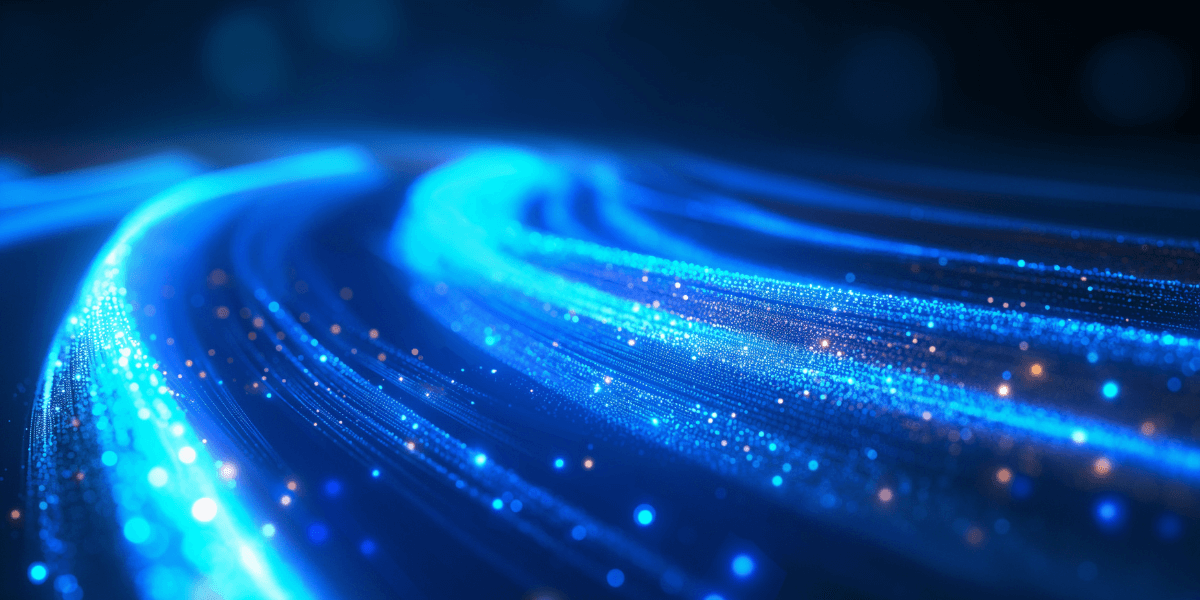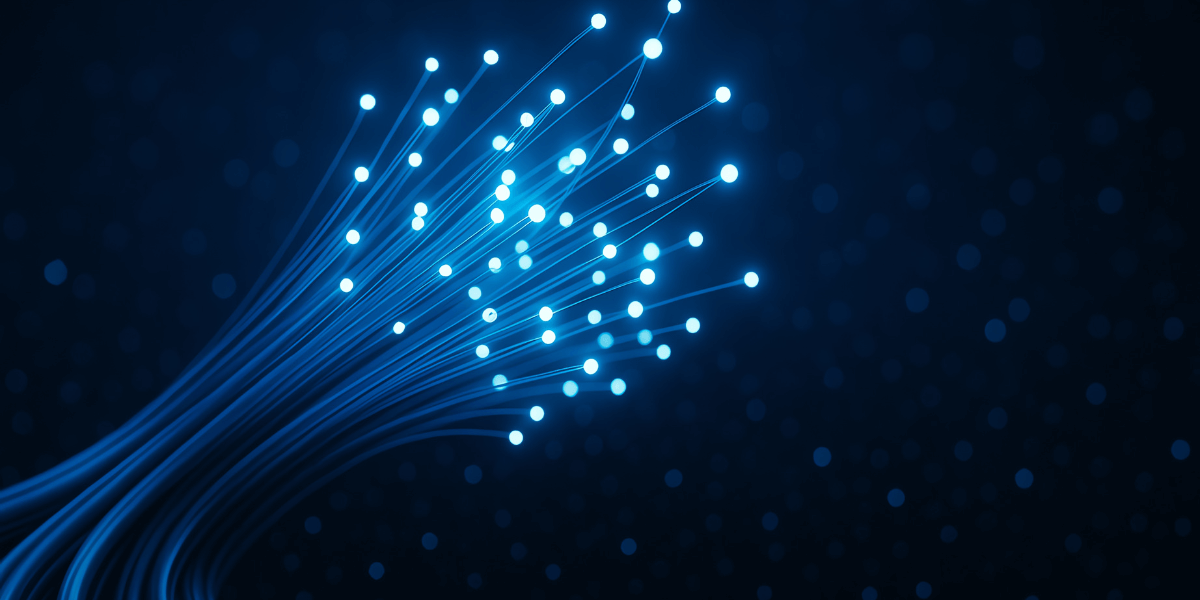How Fiber Internet Works: Why Light Beats Copper Every Time

Table of Contents
Let’s set the scene: You’re trying to download a work presentation while your teenager streams Netflix in 4K and your spouse joins a video conference call. This scenario ends in frustration for everyone—buffering videos, dropped calls, and the spinning wheel of death. However, with fiber internet, everyone gets the bandwidth they need without interruption.
Are you considering investing in ultra-fast fiber internet but find yourself wondering exactly how this technology works its magic? You’re not alone. Millions of Americans are switching from sluggish DSL and unreliable cable to lightning-fast Fidium Fiber, but many don’t fully understand what makes it so dramatically superior.
Quick Answer: Fiber internet works by transmitting data as light pulses through ultra-thin glass cables at speeds that reach up to 70% of the speed of light. Unlike copper-based DSL or cable internet that rely on electrical signals, fiber uses laser-generated light signals bouncing through microscopic glass strands via total internal reflection, delivering blazing speeds up to 10,000 Mbps with perfectly symmetrical upload and download speeds.
Today, we’re addressing one of the top questions people ask–how fiber internet works–and exploring the fascinating science behind this futuristic technology.
How Fiber Internet Works
Fiber-optic internet transmits data using light signals through glass or plastic fibers, achieving speeds of up to 10 Gigabits per second (Gbps)—approximately 100 times faster than traditional DSL connections.
The 3-step fiber internet process:
- Data conversion: Your router converts electrical signals to light pulses using a laser transmitter
- Light transmission: Light travels through glass fiber core via total internal reflection at ~200,000 km/second
- Signal conversion: ONT device converts light back to electrical signals your devices understand
Unlike traditional connections using copper wires, fiber internet uses incredibly thin strands of glass—each about the width of a human hair—to transmit data as pulses of light. This fundamental difference makes fiber dramatically faster and more reliable than any other available technology.
The Science Behind Light Transmission
Total internal reflection explained: When light hits the boundary between the glass core and cladding at specific angles, 100% of the light reflects back into the core—no light escapes. This allows signals to travel miles without losing strength, even when cables bend around corners.
What is an ONT? An Optical Network Terminal converts fiber light signals to electrical signals your devices understand, acting as the bridge between the fiber network and your home’s electrical systems.

Speed and performance comparison
Fiber vs DSL vs Cable
Connection type comparison:
| Connection Type | Max Speed | Technology | Upload Speed | Latency |
| DSL | 100 Mbps | Copper phone lines | 3-10 Mbps | 20-50ms |
| Cable | 1,000 Mbps | Coaxial copper | 10-50 Mbps | 15-40ms |
| Fiber | 10,000 Mbps | Glass light transmission | Symmetrical | 1-5ms |
Real-World Speed Examples
Downloading a 2-hour HD movie (4GB):
- DSL (25 Mbps): 21 minutes, 20 seconds
- Cable (100 Mbps): 5 minutes, 20 seconds
- Fiber (1000 Mbps): 32 seconds
Uploading 1GB of photos to cloud storage:
- DSL (3 Mbps upload): 44 minutes, 40 seconds
- Cable (10 Mbps upload): 13 minutes, 20 seconds
- Fiber (1000 Mbps upload): 8 seconds
Why Fiber Outperforms Traditional Internet
DSL limitations:
- Speed decreases with distance from central office
- Susceptible to electromagnetic interference
- Asymmetrical speeds (much slower upload)
Cable internet drawbacks:
- Shared bandwidth with neighbors causes slowdowns during peak hours
- Performance affected by weather and electrical interference
- Significantly slower upload speeds
Fiber advantages:
- Distance independent: No speed loss over miles
- Weather resistant: Glass fibers immune to interference
- Dedicated connection: No shared bandwidth
- Symmetrical speeds: Equal upload and download performance
Fiber Internet Installation Process
Installation timeline and steps:
Pre-Installation (1-2 weeks before)
- Site survey: Technician identifies optimal fiber route
- Utility marking: Underground lines marked for safety
- Scheduling: Installation appointment confirmed
Installation Day (2-4 hours total)
Step 1: Fiber Cable Installation
- Run fiber from street to home exterior
- Use existing utility paths when possible
- Minimal property disruption
Step 2: ONT Installation
- Mount ONT on exterior wall near electrical panel
- Connect to standard electrical outlet
- Professional fiber cable connection
Step 3: Network Setup
- Run Ethernet from the ONT to the router location
- Configure the router for optimal performance
- Test speeds and activate service

Average industry pricing
Fiber Internet Costs and Value
Average fiber pricing in 2025:
| Speed Tier | Monthly Cost | Best For |
| 100 Mbps | $40-60 | 1-2 person household |
| 500 Mbps | $60-80 | Family of 3-4, moderate streaming |
| 1 Gig | $70-100 | Heavy users, remote work, gaming |
| Multi-Gig | $100-200 | Content creators, power users |
Cost comparison (monthly averages):
- DSL: $35-65 (25-100 Mbps, limited upload)
- Cable: $55-95 (100-1000 Mbps, slow upload)
- Fiber: $60-100 (100-1000 Mbps, symmetrical speeds)
Benefits of Fiber Internet
For Remote Workers
Symmetrical speeds ensure smooth video calls, rapid file uploads, and seamless cloud application performance. No more worrying about choppy video calls or slow file sharing.
For Families
Multiple users can stream 4K videos, game online, and video chat simultaneously without performance degradation. Fiber’s high capacity handles everyone’s needs.
For Gamers
Ultra-low latency (1-10ms) provides competitive gaming advantages with minimal lag and faster response times compared to cable (15-50ms) or DSL (20-100ms).
For Future-Proofing
Fiber infrastructure supports emerging technologies like 8K streaming, virtual reality, and smart home devices that require massive bandwidth.
Frequently Asked Questions
How Fast is Fiber Internet Really?
Measured speeds typically match advertised speeds: 1 Gig fiber delivers 940-1000 Mbps both directions, unlike cable/DSL where actual speeds often fall 20-50% below advertised speeds.
Does Weather Affect Fiber Internet?
No, fiber is weather-resistant. Glass fibers are immune to rain, snow, temperature changes, and electromagnetic interference, providing 99.9% uptime vs 95-98% for copper connections.
Can I Use My Existing Router?
Usually yes, but upgrades are recommended. While existing routers work via ethernet to the ONT, Wi-Fi 6 routers maximize fiber speeds wirelessly. Older routers may bottleneck performance.
Is Fiber Worth the Cost?
Yes, for most users. Fiber provides 10-100x faster speeds than DSL, symmetrical upload/download speeds, lower latency, greater reliability, and future-proof technology lasting 25+ years.
Environmental and Economic Benefits
Energy efficiency: Fiber networks consume 54% less energy than copper-based networks and last 25-30 years vs 10-15 years for copper infrastructure.
Property value increase: Homes with fiber internet access sell for 3-8% premiums and attract buyers faster, especially remote workers who require reliable high-speed internet.
Ready to Experience Lightning-Fast Internet?
Fiber internet represents a fundamental leap forward in connectivity technology. By transmitting data as light through ultra-pure glass at nearly the speed of light, fiber delivers unmatched speed, reliability, and performance.
From seamless 4K streaming and lag-free gaming to productive remote work and future-ready smart home capabilities, fiber internet unlocks possibilities that simply aren’t available with traditional copper-based connections. The symmetrical speeds, weather resistance, and distance independence make fiber the clear choice for anyone seeking the ultimate internet experience.
Is Fidium Fiber Available in My Area?
Ready to leave slow internet behind and step into the future of connectivity? Fidium Fiber delivers the cutting-edge fiber internet experience you’ve been waiting for. Our state-of-the-art fiber optic network brings you symmetrical gigabit speeds that handle everything your household demands—from 4K streaming and online gaming to video conferences and cloud backups.
Don’t let outdated internet technology hold you back any longer. Experience the difference that true fiber internet makes in your daily digital life. With Fidium Fiber, you get more than just fast internet—you get reliability, consistency, and future-proof technology.
Find out if Fidium Fiber is available in your area by entering your zip code here.
Your high-speed, reliable internet future starts now. Check your Fidium Fiber availability and take the first step toward lightning-fast connectivity.
Sources
[1] Reviews.org. “How Does Fiber Optic Internet Work?"
[2] Corning.com. “2025 Broadband Trends and Predictions"
[3] En.wikipedia.org. “Fiber Optic Communication"
